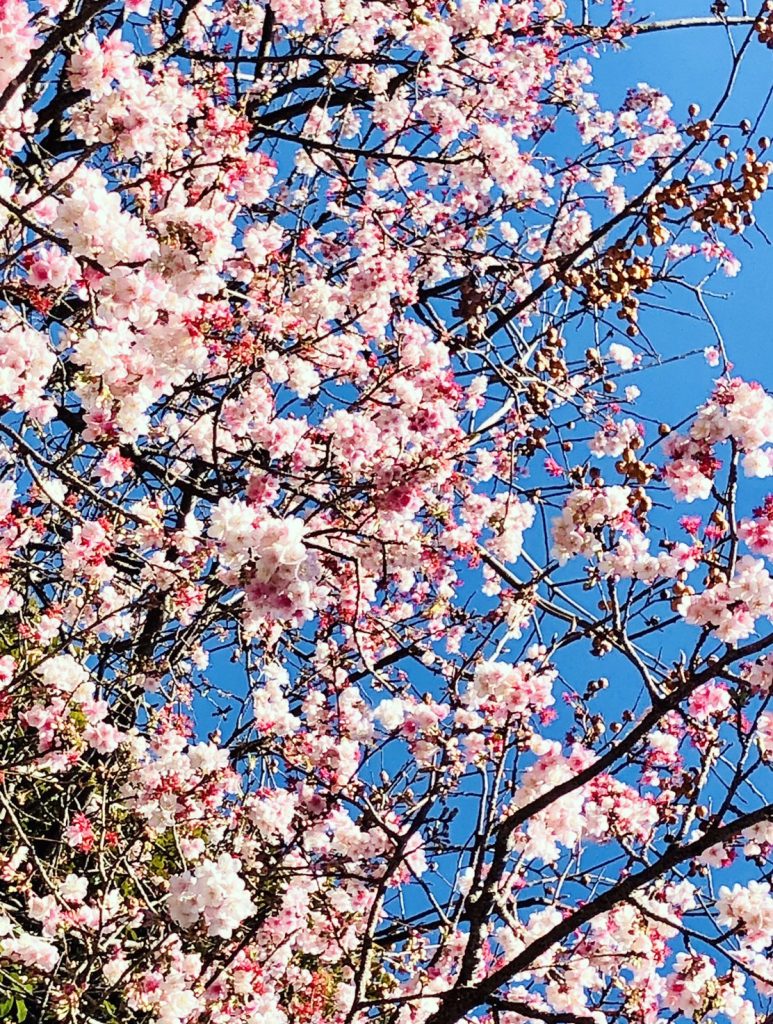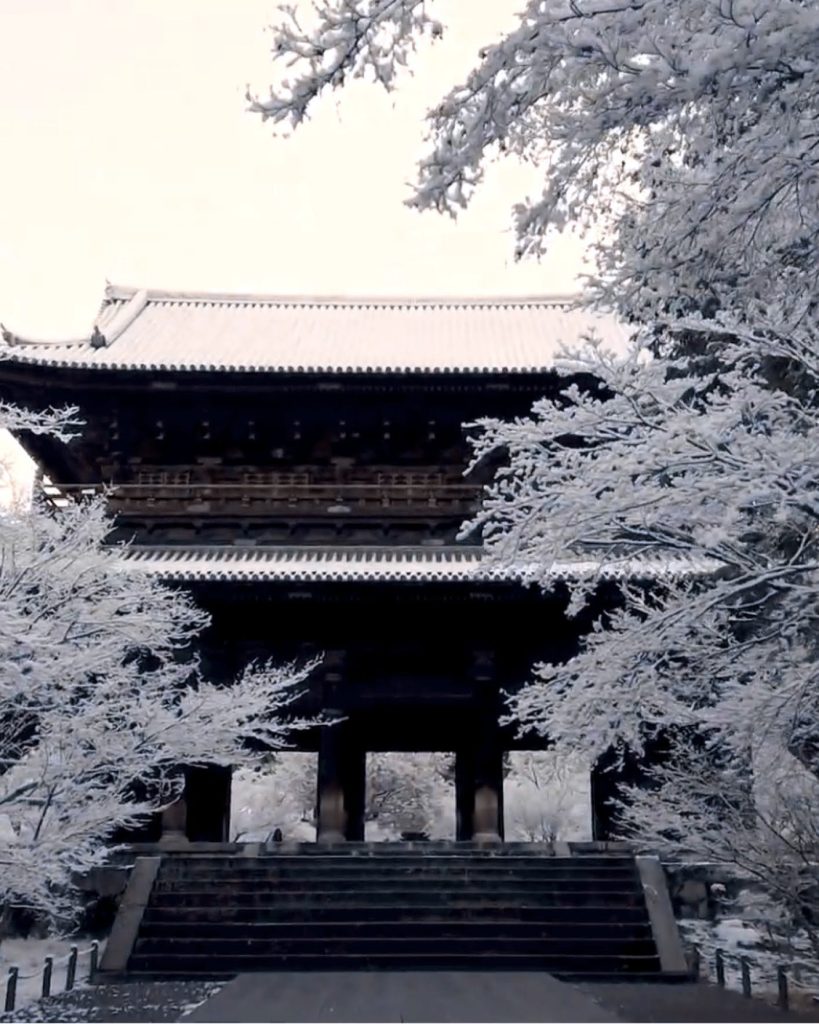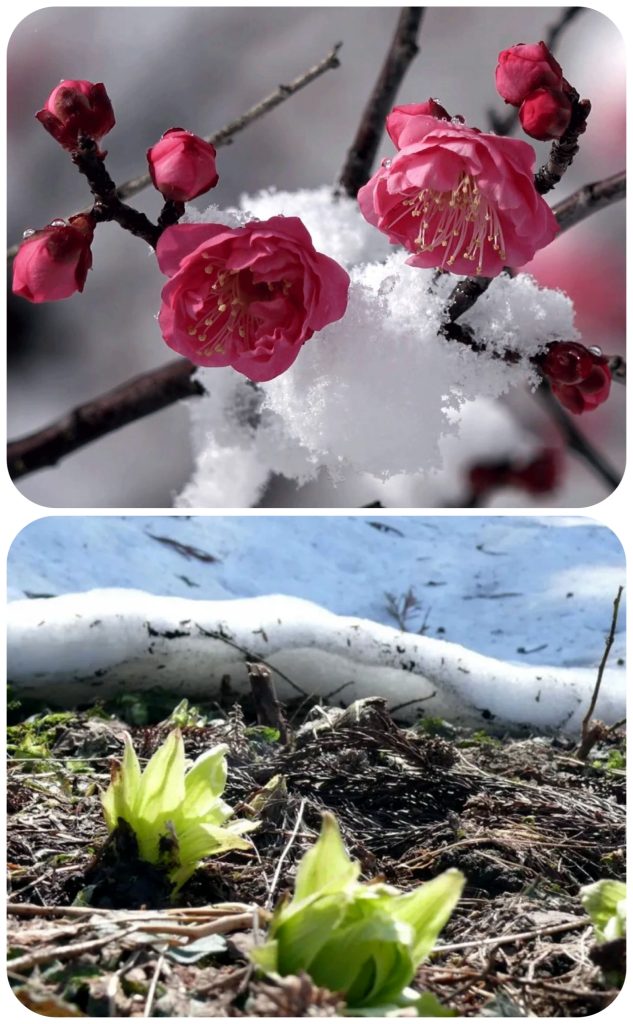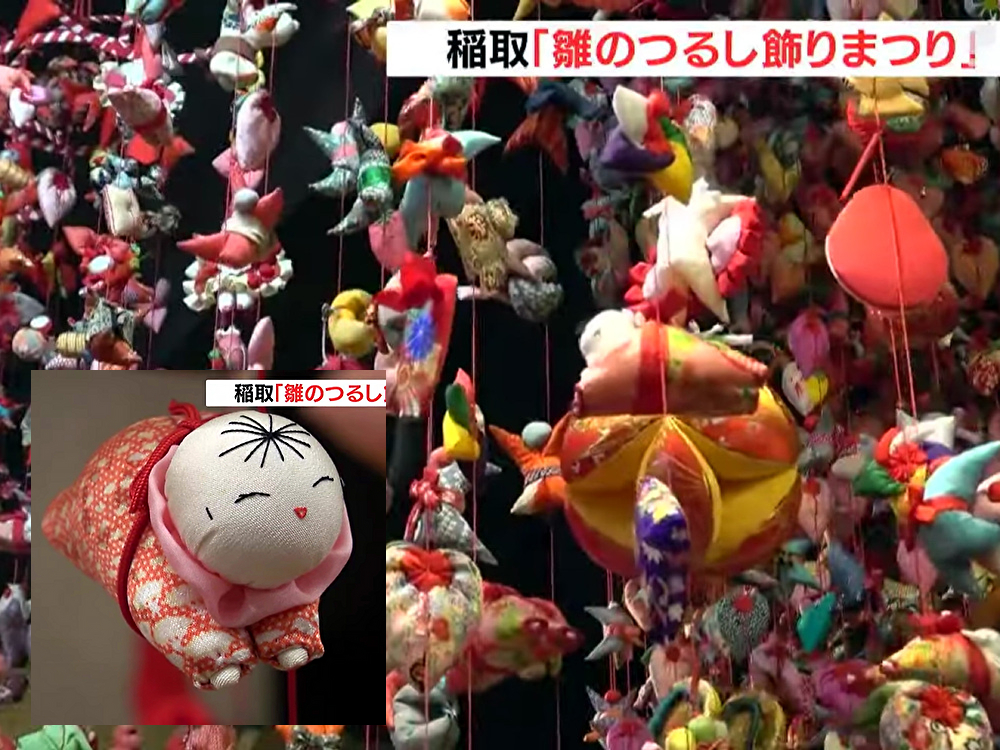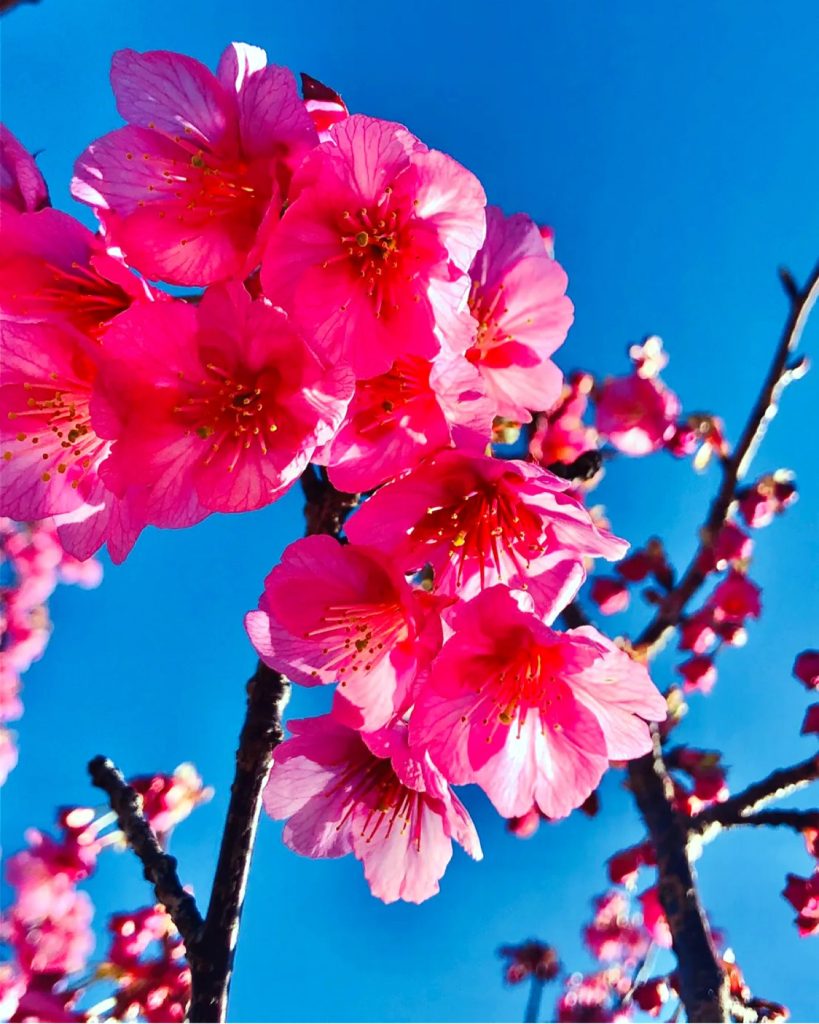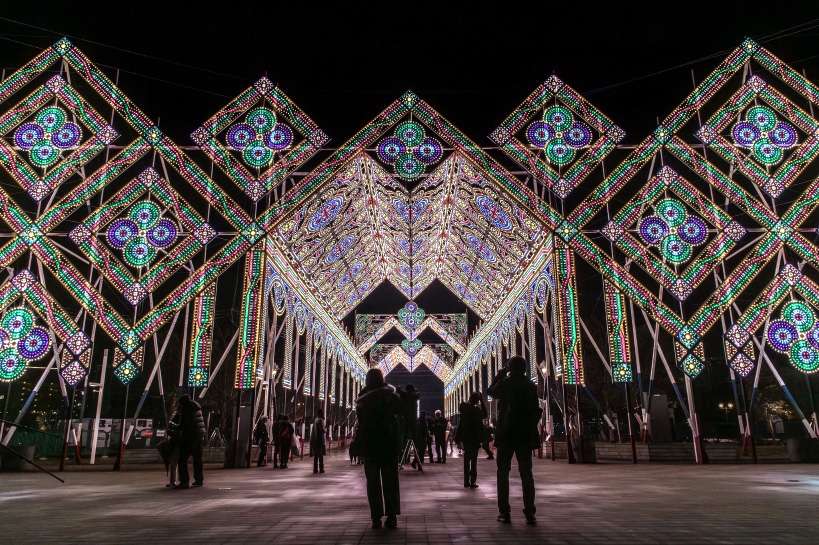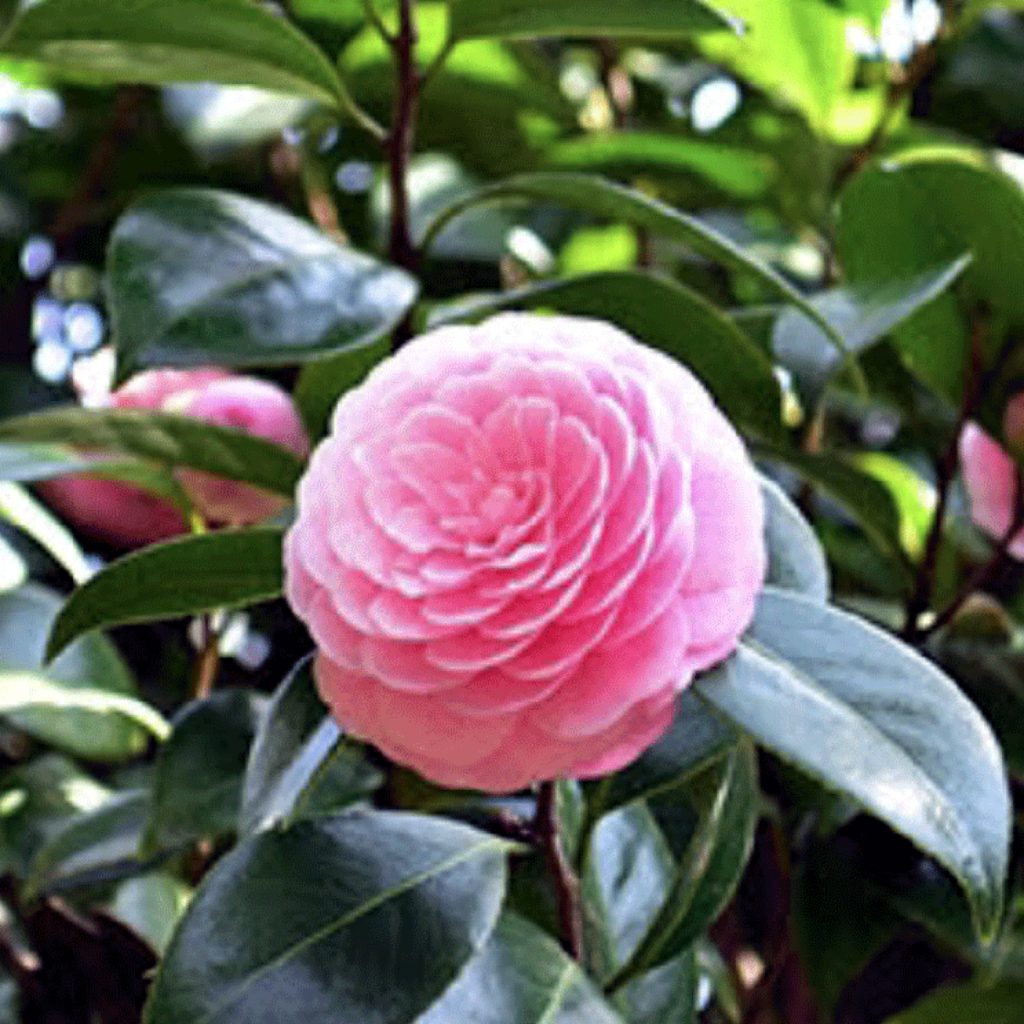
Otome Tsubaki (the maiden’s camellia), aptly named ‘Pink Perfection’ in English, is a charming beauty. Camellias, originally from Japan, were introduced to the West in the 17th century. Their evergreen nature even in winter and the ability to bloom in the shade made them highly popular. They are affectionately known as ‘Camellia’ in Europe and the Americas. Embraced in the world of art, Giuseppe Verdi’s opera ‘La Traviata’ is particularly famous. Numerous varieties with luxurious blooms based on Western aesthetic preferences were created.
Among them, the Otome Tsubaki, originally from Japan, gained popularity when it was taken overseas during the Edo period, earning it the nickname ‘Winter Queen.’ It is characterized by the fact that the yellow stamens that characterize camellias are not visible, and it is called “Sen-e-zaki”. While blooming mostly from March to April, some varieties also flower in November and December. While the sasanqua flowers fall one by one, the camellia flowers fall off together, but this Otome Tsubaki’s flowers have a long shelf life and do not fall off easily, so the brown flowers often remain on the branches.
英語名’Pink Perfection’がピッタリの乙女椿です。日本原産の椿は、17世紀に日本から西洋に伝来すると、冬にでも常緑で、日陰でも花を咲かせる性質が好まれ、大変な人気となりました。欧米でも”カメリア”という名で親しまれています。芸術の世界でも好んで取り上げられ、ジュゼッペ・ベルディのオペラ『椿姫』は特に有名です。欧米の美意識に基づいた豪華な花をつける品種が次々と作り出されました。
中でも、乙女椿は日本原産の花として江戸時代には海外へと持ち出されて人気を博し、「冬の女王」と呼ばれています。椿の特徴である黄色いおしべが見えないのが特徴で、「千重咲き(せんえざき)」と呼ばれます。開花は3〜4月が多いですが、11月や12月にも花をつけるものもあります。山茶花は花びらが一枚一枚散るのに対して、椿の花は花ごと落ちますが、この椿乙女は花持ちがよく、花はなかなか落下しないため褐色に変色した花が枝に残っていることがよくあります。


